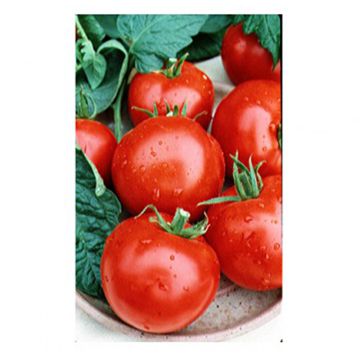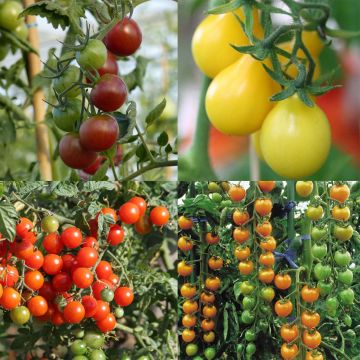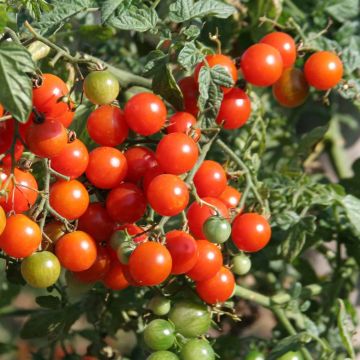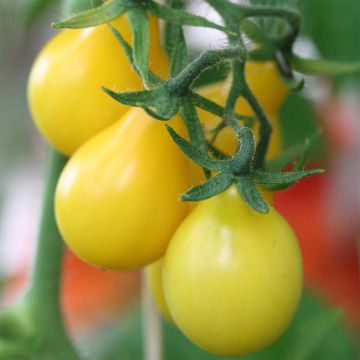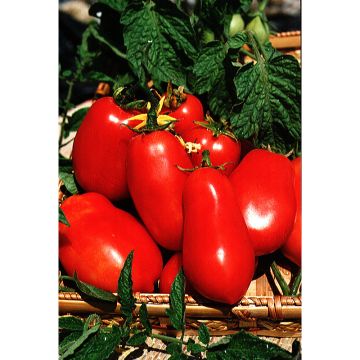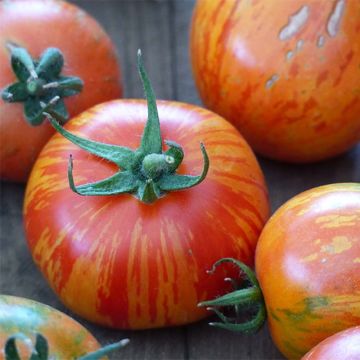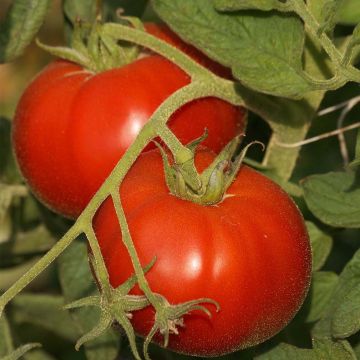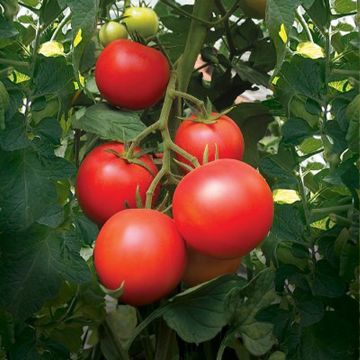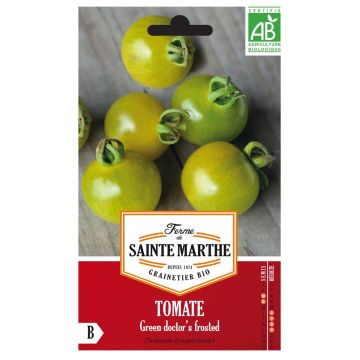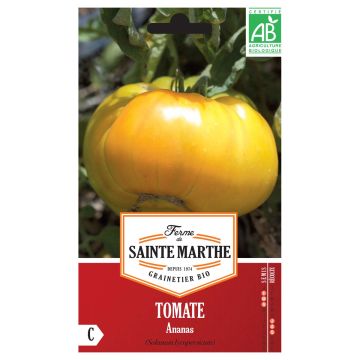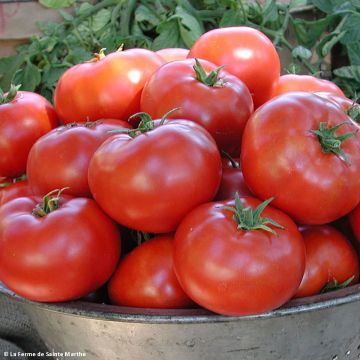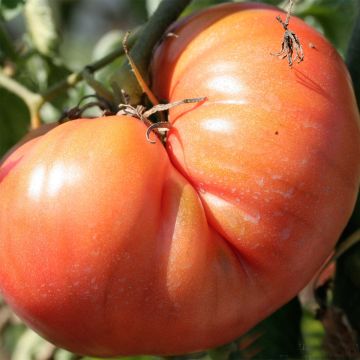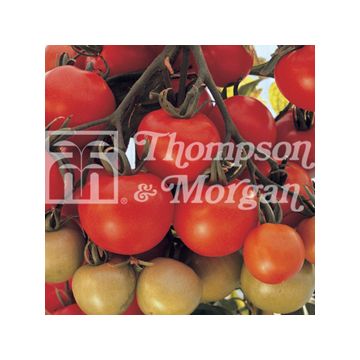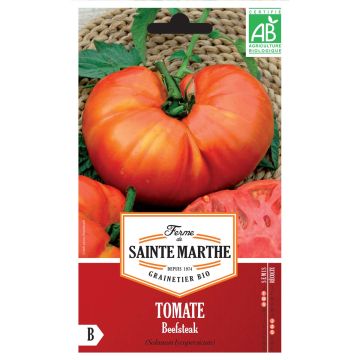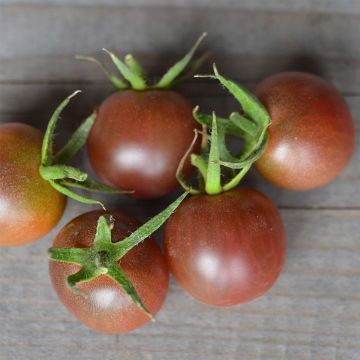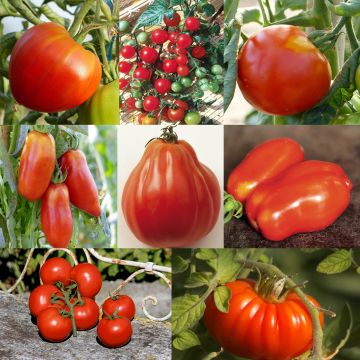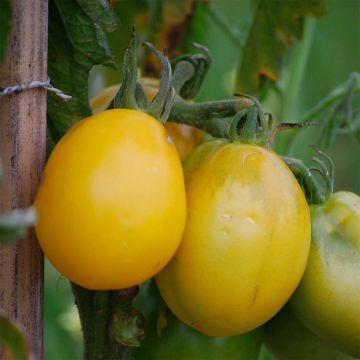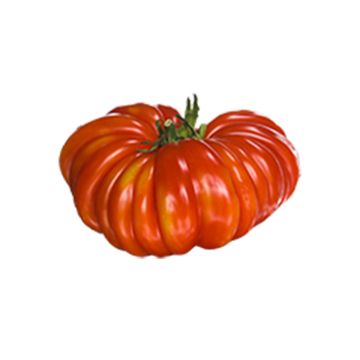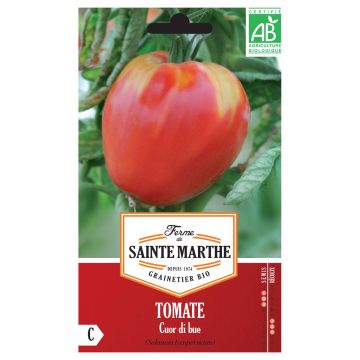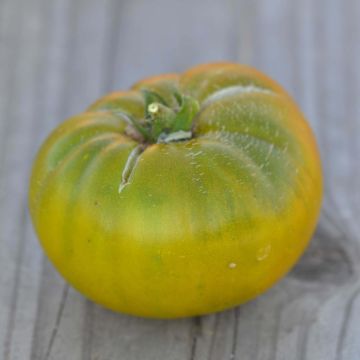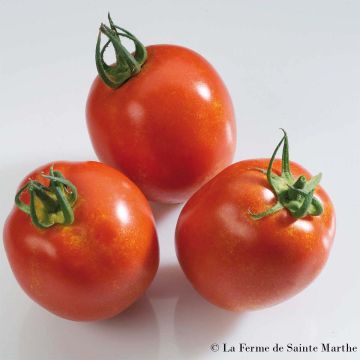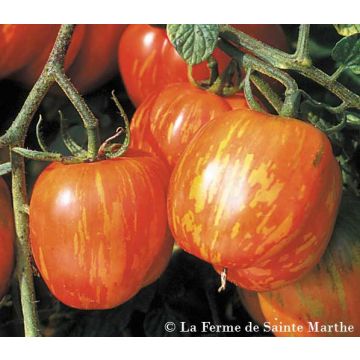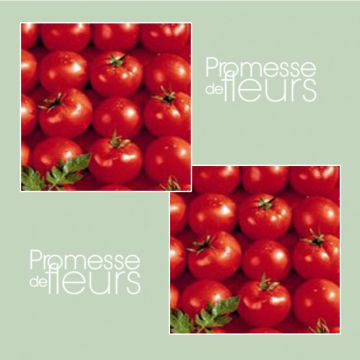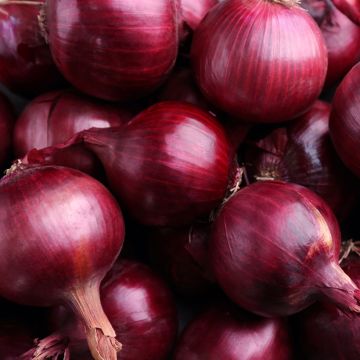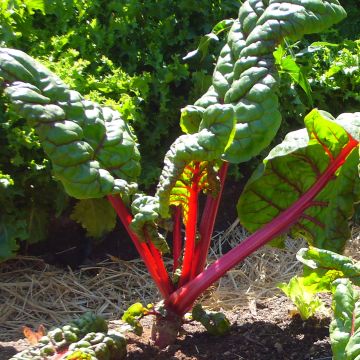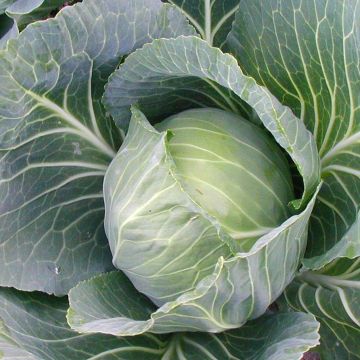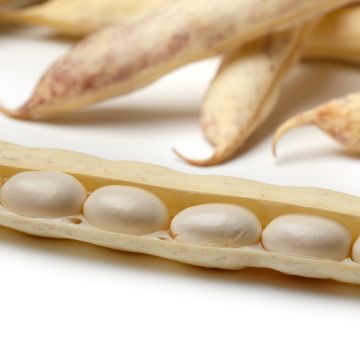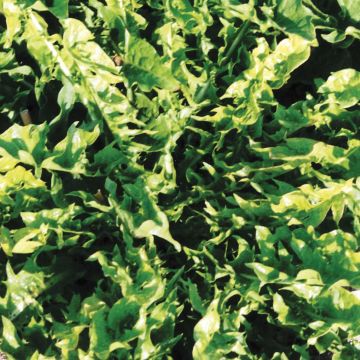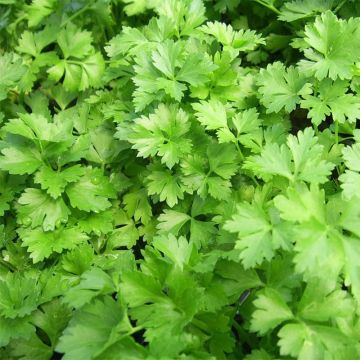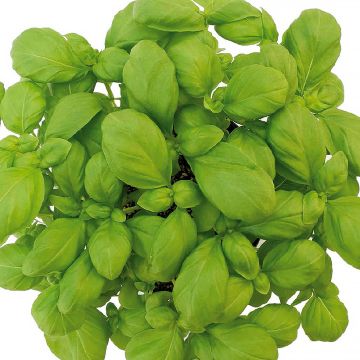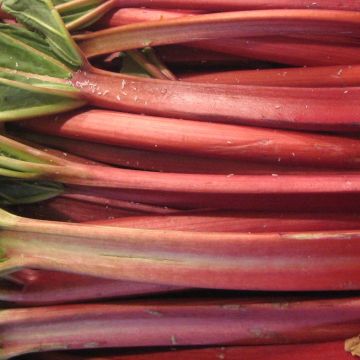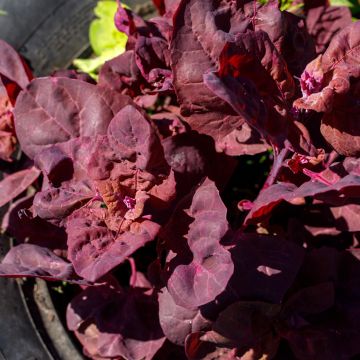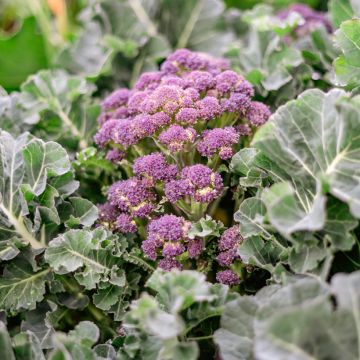Shipping country and language
Your country of residence may be:
Your country of residence is:
For a better user experience on our website, you can select:
Your shipping country:
Andorra
Austria
Belgium
Bulgaria
Canada
Chile
Croatia
Cyprus
Czechia
Denmark
Estonia
Finland
France
Germany
Greece
Hungary
Iceland
Ireland
Italy
Latvia
Lithuania
Luxembourg
Malta
Monaco
Netherlands
Poland
Portugal
Romania
Slovakia
Slovenia
Spain
Sweden
Switzerland
United Kingdom
We only deliver seed and bulb products to your country. If you add other products to your basket, they cannot be shipped.
Language:
French
German
Spanish
English
My Account
Hello
My wish lists
Plantfit
Log in / Register
Existing customer?
New customer?
Create an account to track your orders, access our customer service and, if you wish, make the most of our upcoming offers.


Tomato Sweetbaby - Ferme de Sainte Marthe seeds
Tomato Sweetbaby - Ferme de Sainte Marthe seeds
Solanum lycopersicum Sweetbaby
Cherry tomato
Absolute scam!! I'm extremely disappointed with these seeds that I received completely crushed in the packet! Just powder! I only noticed it now when I wanted to sow them, but I placed the order on 05/03/2018! Disappointed!
Sandra, 16/04/2018
Why not try an alternative variety in stock?
View all →Order in the next for dispatch today!
Dispatch by letter from €3.90.
Delivery charge from €5.90 Oversize package delivery charge from €6.90.
More information
This item is not available in your country.
Schedule delivery date,
and select date in basket
This plant carries a 6 months recovery warranty
More information
We guarantee the quality of our plants for a full growing cycle, and will replace at our expense any plant that fails to recover under normal climatic and planting conditions.
Seed-only orders are dispatched by sealed envelope. The delivery charge for seed-only orders is €3.90.

Description
'Sweetbaby' is truly a favourite amongst kids! Of all the cherry varieties, it is the most fragrant, sweetest, and smallest too: its fruits look like coral pearls gathered into long panicles. This magic little tomato is a great choice for parents who want to get their children to enjoy tomatoes. Despite its very small fruits, 'Sweetbaby' is not a dwarf variety and can reach 1.50 m in height. In a large enough container, it will happily grow on a patio or balcony. For higher yields however, plant it directly into the garden soil. Sow from February to May for a July to October harvest.
Tomatoes are native to South and Central America. Several varieties were already cultivated by the Incas long before the arrival of the Conquistadors, and nowadays the sheer abundance of tomato varieties is quite astounding. The name "tomato" is derived from the Inca word "Tomatl" and refers to both the plant and its fruit. Tomatoes come in all shapes and sizes, and a fabulous array of colours is available (red of course, but also green, yellow and - for a few very rare varieties - blue). Older varieties are plants with indeterminate growth that can live up to two years. The more recent varieties are of so-called determinate growth (also known as "bush" tomatoes) meaning that they remain compact, thus limiting the need to stake or train them.
Tomatoes are among the many foods alresady grown by Indigenous peoples in the Americas before the arrival of Europeans, such as beans, corn, squash, potatoes and chillies. However, tomatoes took considerably longer to reach our taste buds. and for good reason! For a long time, they were cultivated for their aesthetic and medicinal qualities. The similarity of their fruit to that of the Mandrake plant (also in the Solanaceae family) led people to believe they were toxic and unfit for human consumption. Only at the beginning of the 20th century did Europeans start to appreciate tomatoes for their unique taste, and the rest is history!
Its undeniably pretty fruit brings joy and colour to the vegetable garden. They also boast many nutritional benefits. Like most vegetables, tomatoes are low in calories and have a high-water content, but they also contain a very interesting molecule: lycopene, a powerful antioxidant. The longer the tomatoes are cooked, the more lycopene is released. Tomatoes also are remarkably rich in vitamin C, provitamin A and trace elements.
Nowadays, their gustatory and nutritional qualities are well established. For the gardener, tomatoes are one of the summer garden's highlights. Simply determine how your tomatoes are going to be used (in a salad? in a soup? eaten directly off the plant?), when you would like to harvest them, and then choose your varieties accordingly. Depending on where you live and how much sunshine the plants are going to get, some varieties might be more suitable than others. Rest assured, there are many varieties to choose from. While tomato plants unavoidably require lots of sun, they don't necessarily require lots of space to grow. A container or a bin full of good soil is an ideal home for a cherry tomato plant, meaning that even with a small balcony or greenhouse, you can still grow these wonderful vegetables. Just make sure you don't pick any stems, leaves or unripe fruit as they contain solanine and should not be consumed.
Harvesting: depending on whether you are growing an early or late season variety, there can be 50 to 100 days from the date you transplant the seedlings to the date you harvest the fruit. As a rule, tomatoes are ready to be picked when they have completely taken on the colour shown on the packet, and when their texture - though firm - has a slight give to it. Fruit picked with its stem will keep for longer.
Preservation: Tomatoes with a low water content keep for longer. They will be fine for a few days in the vegetable compartment in the fridge or spread out on a newspaper in a cool room. To keep them for longer, they can be dried, frozen, canned or made into delicious chutneys, tomato sauce or juice. We recommend saving a few for a tomato confit – it’s easy to make, and very tasty. Simply cut your tomatoes in half and set aside the juice. Place your tomato halves face up in a large baking pan. Sprinkle with salt, pepper, a bit of sugar and bake in the oven for at least an hour on a low setting. Remove the tomatoes and eat them immediately, otherwise put in them a glass jar and cover with olive oil, to be eaten later.
Good to know: sowing several different varieties of tomato each year will prevent you from losing your whole crop to bad weather or disease.
Blossom-end rot is a common problem encountered when growing tomatoes, caused by a lack of calcium: prevent this by spraying your plants regularly with comfrey liquid fertiliser.
When transplanting, make sure you bury the stem up to the first set of leaves. This will stimulate root growth and guarantee bigger and better fruit.
Plants that grow well together in the garden often taste great together too – tomato and basil are a perfect example.
Harvest
Plant habit
Foliage
Botanical data
Solanum
lycopersicum
Sweetbaby
Solanaceae
Cherry tomato
Cultivar or hybrid
Annual
Other Tomato seeds
Planting and care
Tomato plants are easy to grow. Sunlight and heat are crucial for their success. Tomatoes thrive in rich, well-drained, and deeply loosened soil. A few months before planting, add well-rotted compost after loosening the soil. If your soil is Initially, grow the seedlings by transplanting them into 8 to 10.5 cm (3 to 4in) pots filled with potting soil. Then place them in a sunny and heated location: the temperature should never drop below 12-14°C (53.6-57.2°F), otherwise the foliage will turn yellow and the growth of the plant will stop. When the plants reach a height of about 15 cm (6in), transplant them into the ground if the outdoor temperatures allow it.
Planting in the ground should be done once the risk of frost has passed, usually in mid-May. Choose a sunny and sheltered location. Space the plants 50 cm (20in) apart in rows and 70 cm (28in) between rows if you prune them, or 1 m (3ft) in all directions for unpruned cultivation. Dig a hole (3 times the volume of the pot), add some well-rotted compost at the bottom of the hole. Place your plant, which can be buried up to the first leaves, then backfill. Firm the soil, create a basin in the soil around the base, then water generously. Be careful not to wet the leaves to protect your plants from fungal diseases. Install stakes (soon after planting to avoid damaging the roots). Mulch around the base of the plants. Water regularly as irregular watering can lead to calcium deficiency, resulting in apical necrosis commonly known as "blossom end rot".
Furthermore, tomatoes, like potatoes, are susceptible to late blight. This is a fungal disease caused by the Phytophthora infestans fungus. Late blight develops in warm and humid weather. Small spots appear, white on the undersides of the leaves and green-grey on the upper sides. To reduce the risks, space the plants sufficiently and avoid watering the foliage. In terms of crop rotation, wait 4 years before growing a plant from the Solanaceae family in the same spot and do not cultivate them in neighbouring rows. If necessary, spray with Bordeaux mixture or preparations such as horsetail decoction or garlic tea.
To treat the phenomenon of 'blossom-end rot' - not a disease but a calcium deficiency - spray a comfrey maceration/tea rich in calcium on your plants. When transplanting, do not hesitate to bury the stem up to the first leaves. This will stimulate the root system, ensuring a bountiful fruit harvest. Winning garden associations are often the same on the plate. It is a good mnemonic to remember that tomatoes and basil go well together.
Though less common, tomato cultivation in pots is definitely possible by choosing varieties with small fruits and placing the pot in a sunny location.
Seedlings
Care
Intended location
- , onOrder confirmed
Reply from on Promesse de fleurs
Vegetable seeds
Haven't found what you were looking for?
Hardiness is the lowest winter temperature a plant can endure without suffering serious damage or even dying. However, hardiness is affected by location (a sheltered area, such as a patio), protection (winter cover) and soil type (hardiness is improved by well-drained soil).

Photo Sharing Terms & Conditions
In order to encourage gardeners to interact and share their experiences, Promesse de fleurs offers various media enabling content to be uploaded onto its Site - in particular via the ‘Photo sharing’ module.
The User agrees to refrain from:
- Posting any content that is illegal, prejudicial, insulting, racist, inciteful to hatred, revisionist, contrary to public decency, that infringes on privacy or on the privacy rights of third parties, in particular the publicity rights of persons and goods, intellectual property rights, or the right to privacy.
- Submitting content on behalf of a third party;
- Impersonate the identity of a third party and/or publish any personal information about a third party;
In general, the User undertakes to refrain from any unethical behaviour.
All Content (in particular text, comments, files, images, photos, videos, creative works, etc.), which may be subject to property or intellectual property rights, image or other private rights, shall remain the property of the User, subject to the limited rights granted by the terms of the licence granted by Promesse de fleurs as stated below. Users are at liberty to publish or not to publish such Content on the Site, notably via the ‘Photo Sharing’ facility, and accept that this Content shall be made public and freely accessible, notably on the Internet.
Users further acknowledge, undertake to have ,and guarantee that they hold all necessary rights and permissions to publish such material on the Site, in particular with regard to the legislation in force pertaining to any privacy, property, intellectual property, image, or contractual rights, or rights of any other nature. By publishing such Content on the Site, Users acknowledge accepting full liability as publishers of the Content within the meaning of the law, and grant Promesse de fleurs, free of charge, an inclusive, worldwide licence for the said Content for the entire duration of its publication, including all reproduction, representation, up/downloading, displaying, performing, transmission, and storage rights.
Users also grant permission for their name to be linked to the Content and accept that this link may not always be made available.
By engaging in posting material, Users consent to their Content becoming automatically accessible on the Internet, in particular on other sites and/or blogs and/or web pages of the Promesse de fleurs site, including in particular social pages and the Promesse de fleurs catalogue.
Users may secure the removal of entrusted content free of charge by issuing a simple request via our contact form.
The flowering period indicated on our website applies to countries and regions located in USDA zone 8 (France, the United Kingdom, Ireland, the Netherlands, etc.)
It will vary according to where you live:
- In zones 9 to 10 (Italy, Spain, Greece, etc.), flowering will occur about 2 to 4 weeks earlier.
- In zones 6 to 7 (Germany, Poland, Slovenia, and lower mountainous regions), flowering will be delayed by 2 to 3 weeks.
- In zone 5 (Central Europe, Scandinavia), blooming will be delayed by 3 to 5 weeks.
In temperate climates, pruning of spring-flowering shrubs (forsythia, spireas, etc.) should be done just after flowering.
Pruning of summer-flowering shrubs (Indian Lilac, Perovskia, etc.) can be done in winter or spring.
In cold regions as well as with frost-sensitive plants, avoid pruning too early when severe frosts may still occur.
The planting period indicated on our website applies to countries and regions located in USDA zone 8 (France, United Kingdom, Ireland, Netherlands).
It will vary according to where you live:
- In Mediterranean zones (Marseille, Madrid, Milan, etc.), autumn and winter are the best planting periods.
- In continental zones (Strasbourg, Munich, Vienna, etc.), delay planting by 2 to 3 weeks in spring and bring it forward by 2 to 4 weeks in autumn.
- In mountainous regions (the Alps, Pyrenees, Carpathians, etc.), it is best to plant in late spring (May-June) or late summer (August-September).
The harvesting period indicated on our website applies to countries and regions in USDA zone 8 (France, England, Ireland, the Netherlands).
In colder areas (Scandinavia, Poland, Austria...) fruit and vegetable harvests are likely to be delayed by 3-4 weeks.
In warmer areas (Italy, Spain, Greece, etc.), harvesting will probably take place earlier, depending on weather conditions.
The sowing periods indicated on our website apply to countries and regions within USDA Zone 8 (France, UK, Ireland, Netherlands).
In colder areas (Scandinavia, Poland, Austria...), delay any outdoor sowing by 3-4 weeks, or sow under glass.
In warmer climes (Italy, Spain, Greece, etc.), bring outdoor sowing forward by a few weeks.
